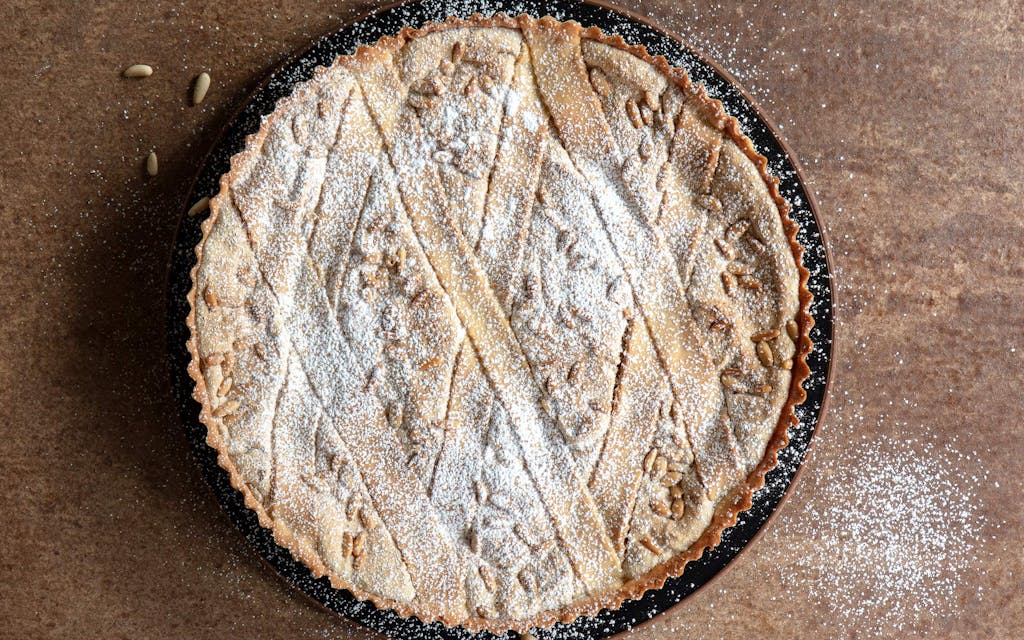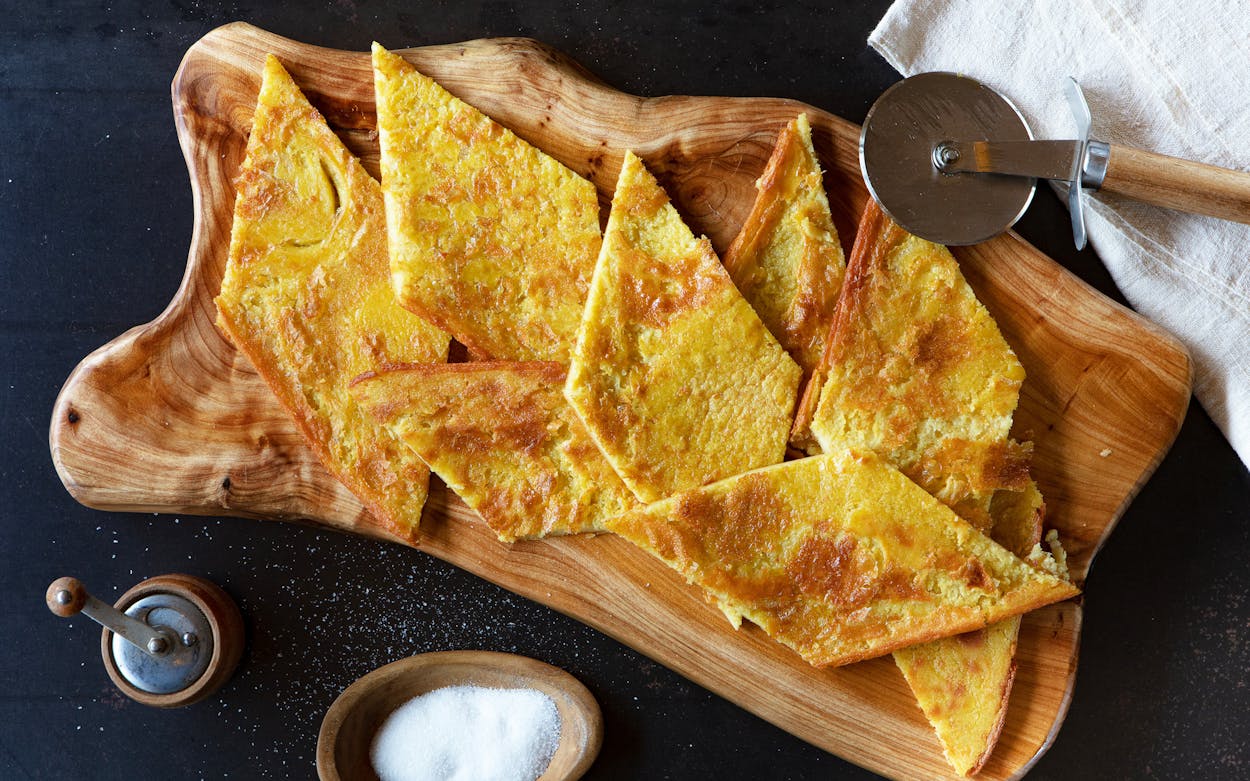Laurel Evans has made a career of teaching Italians about American cuisine. The cookbook author was born and raised in Boerne, but moved to Milan when she fell in love with and eventually married an Italian, photographer Emilio Scoti. Through her blog Un’Americana in Cucina and her cookbooks Buon Appetito America!, American Bakery, and La Cucina Tex-Mex, she has spent years showing her adopted homeland that food in the U.S. is more than just hamburgers and hot dogs. And now she’s flipping the equation: her first book in English, Liguria, the Cookbook: Recipes From the Italian Riviera, coming September 28, aims to show us that Italians eat more than pizza and pasta.
Liguria shares the recipes and stories of the region of Italy responsible for focaccia and pesto. This long and narrow coastal region touches “some of the most coveted eating destinations on the planet,” Evans explains—France, Emilia-Romagna, and Tuscany—but thus far has largely been overlooked in English-language cookbooks. Because the cuisine emerged in part from poverty, its dishes have an emphasis on waste reduction. Meats are used sparingly, if at all, and Ligurians rely instead on bountiful fresh herbs and what Evans calls umami bombs, like anchovies, olives, and nuts, to bring the flavor.
It’s also a cuisine with dishes similar to recipes in modern, trendy cookbooks—books that remove meat from the center of the plate and employ bright flavors and herbs to bring life to vegetables and whole grains. Indeed, Evans says writing the book often felt like writing stories for food magazines: “How to use anchovies instead of meat! How to up your vegetarian game with umami bombs!” It’s no coincidence that recent popular cookbooks like Yotam Ottolenghi and Ixta Belfrage’s Flavor or Joshua McFadden and Martha Holmberg’s Six Seasons draw inspiration from Italian cooking. Liguria is an entirely different kind of cookbook from these volumes of contemporary, cosmopolitan fare. Full of wisdom handed down through generations by the region’s nonne (including Evans’s mother-in-law) and gorgeous photographs by Scoti, a native Ligurian, of the region’s sweeping vistas and famous hill-perched towns, this is a dive into a historic cuisine deeply rooted in its geography.
The book wouldn’t exist without Evans’s extensive experience writing about American and Texan foods for an international audience. Her previous four books taught her the importance of testing international recipes using the proper local ingredients and equipment—for example, with La Cucina Tex-Mex, she bought an offset smoker from H-E-B and had it shipped to Italy. (She suggests readers smoke their costine di maiale affumicate (barbecue ribs) and punta di petto di manzo affumicato (smoked brisket) low and slow in a standard kettle grill, with wood chips and charcoal.) For Liguria, it was a matter of making sure the baking recipes worked with American ingredients (although her planned trip to Texas to test them was canceled, thanks to COVID-19, and a U.S.-based recipe tester was hired). Once the recipes work, it’s all about giving context: “Whether that’s talking about Tex-Mex in Italy or talking about Liguria in America, I really try to give enough context from the people that make this food in their everyday life here in order to make it more accessible.”
As Texas temperatures start to cool off enough to bake, Evans suggests this pine nut tart for a sweet taste of Liguria.

Pine Nut and Almond Tart
Pine nuts are a staple of Ligurian cuisine, providing crunch and flavor (and non-animal protein) to many recipes in this book. This delicious and pretty tart pairs them with a chewy almond filling and a buttery pastry crust. There is no need to toast the nuts beforehand, as they will get plenty of color while baking on the surface of the tart.
For the crust:
2 cups (9 ounces) all-purpose flour, plus more for dusting
⅛ teaspoon salt
½ cup sugar
½ cup cold unsalted butter, plus 1 tablespoon, melted, for brushing
1 large egg
For the filling:
1 cup (4 ½ ounces) blanched almonds, or 1 ⅓ cup almond flour
1 cup plus 2 tablespoons sugar, divided
4 large egg whites
¼ teaspoon salt
½ teaspoon almond extract
½ teaspoon finely grated lemon zest
To finish:
1 cup (4 ½ ounces) pine nuts
Powdered sugar, for sprinkling (optional)
- Combine flour, salt, and sugar in the bowl of a food processor fitted with a metal blade. Pulse to combine. Add butter and pulse briefly until a crumbly mixture forms. Add egg and pulse until combined into a smooth dough.
- Remove from food processor, wrap tightly in plastic wrap, and refrigerate for at least 1 hour, up to overnight.
- Brush a light layer of melted butter on the bottom and sides a 12-inch tart pan.
- Remove dough from refrigerator. Roll out to about ⅛-inch thick on a lightly floured work surface, then transfer to prepared tart pan. Press to adhere the dough to the bottom and sides of pan. Trim off excess and briefly knead scraps into a ball, then press into a disc and wrap in plastic wrap. Poke a few holes in the bottom of the dough with a fork; then transfer tart pan and leftover dough to the refrigerator while you prepare the filling.
- Preheat oven to 350 degrees Fahrenheit. Combine almonds and 2 tablespoons sugar in a blender or food processor and grind into a fine powder, and set aside. If using almond flour, simply stir it together with 2 tablespoons sugar in a small bowl.
- In a large bowl, beat egg whites and salt on low speed until frothy, then raise to medium-high speed and beat until soft peaks form. Begin to add the cup of sugar, a tablespoon at a time, and beat until glossy, stiff peaks form. Beat in almond extract and lemon zest. Slowly fold in ground almonds, being careful not to deflate the meringue. Scoop the mixture into the prepared tart shell and sprinkle evenly with pine nuts.
- Roll out the remaining dough and cut into 6 ribbons, ¾-inch wide each. Place them over the filling in a crosshatch pattern, pressing to make them adhere to the edge. Trim off excess. Transfer tart to the oven and bake until golden and cooked through, about 40 minutes. If the surface begins to darken before the filling is set, tent the tart with aluminum foil for remaining cooking time. Remove from oven and let cool completely in pan before slicing and serving. Sprinkle with powdered sugar, if desired.
- More About:
- Texas Cookbooks
- Cookbooks
- Boerne







